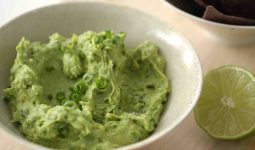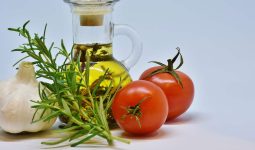This article discusses the different types of edible mushrooms worldwide. Mushrooms are particularly distinctive among the many diverse edibles on our menus.
They’re not plants. They do not come from animals. They are the only multi-celled fungus we eat that is not involved in fermentation.
Mushrooms are the sole food that contains Vitamin D, and they pack a nutritious punch.
Another factor distinguishing edible mushrooms is the sheer number of species found worldwide.
Edible mushrooms complement any diet greatly because they are high in critical nutrients and minerals.
Because they are high in potassium, they help reduce blood vessel tension and the adverse effects of sodium on the body.
Mushrooms are a low-calorie source of antioxidants, fiber, and protein, which can help prevent significant health problems such as cancer, heart disease, and diabetes.
They are also known to improve mood, memory, energy, and the generation of red blood cells.
If you want to learn more about these unique culinary delights, we have a list of some of the different types of edible mushrooms.
1. White Button Mushroom

The White Button Mushroom is unique among edible mushroom varieties.
It is a popular cooking ingredient because of its mild flavor, milky color, and soft texture.
This type of mushroom can be eaten raw or cooked according to one’s taste and preferences.
Button varieties pair well with Italian cuisine, soups, salads, and Indian curry.
Surprisingly, this type accounts for over 90% of all edible mushrooms.
White edible mushrooms offer numerous health benefits that are difficult to overlook.
Because of their prolonged exposure to sunshine, they are low in calories and sugar but high in protein.
They also assist the bones in staying strong by absorbing calcium into the body.
These mushrooms are high in vitamin B12 and an excellent choice for vegetarians.
White mushrooms provide various health benefits, including boosting gut bacteria and insulin resistance and lowering blood sugar levels.
2. Portobello Mushroom
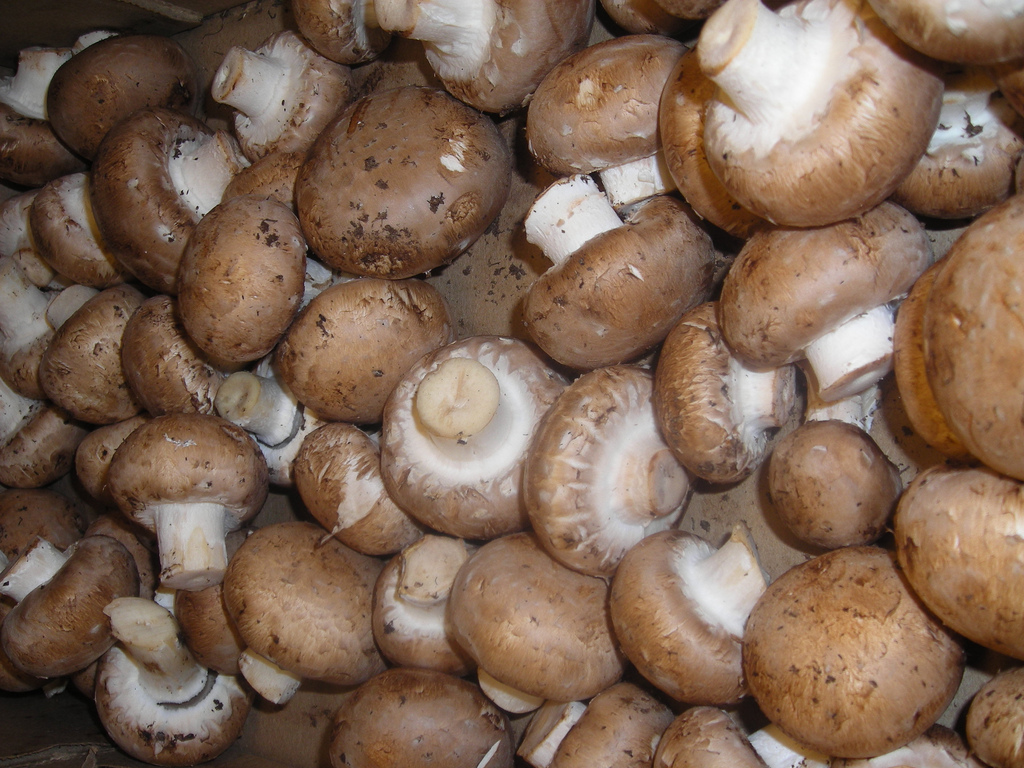
Portobello mushrooms can be found in North American grasslands and throughout Europe.
With a woody flavor, they are widely utilized in cooking, making them one of the most commonly consumed mushrooms worldwide.
Thanks to their unusual meaty feel, they are one of the best mushrooms to eat, making them an excellent meat alternative.
Portobello mushrooms can grow up to ten inches in length, although they are typically picked when they are about an inch in diameter and sold dried.
Because of their dense nature, they are employed in various culinary methods, from broiling and roasting to grilling.
These mushrooms are high in copper and selenium and contain vitamin D naturally.
Portobello contains Vitamin B6 or niacin, which aids metabolism by turning food into energy and producing fatty acids in the body.
3. Shiitake Mushroom
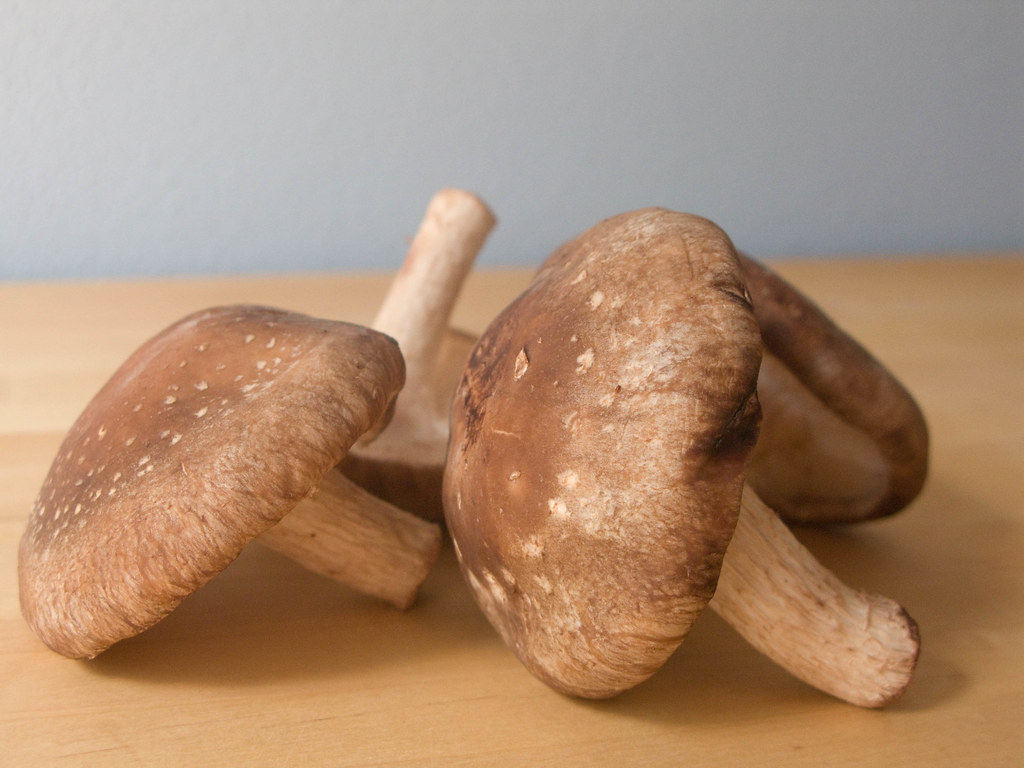
Shiitake Mushrooms, one of the different types of edible mushrooms known for their rich and savory flavor, is of Japanese origin.
Shiitake means “Oak Fungus” in their language, which always refers to where these mushrooms may be.
With a mild, woodsy aroma and a meaty texture, this common edible mushroom type is an excellent choice that works well with nearly anything.
Shiitake mushrooms have a more savory taste than most other varieties.
They are commonly used in soups, stews, steams, and stir-fried dishes.
Shiitake mushrooms are known for their therapeutic benefits and are available in powdered form at various herbal stores.
They are high in fiber and Vitamin B, which help to enhance the immune system efficiently.
They also aid in reducing calorie intake, diabetes, and blood cholesterol levels, among other things.
They have several benefits, including the ability to counteract artery hardening and feature antiviral and antibacterial qualities, making them one of the most popular mushrooms in the world.
4. Bay Bolete Mushroom
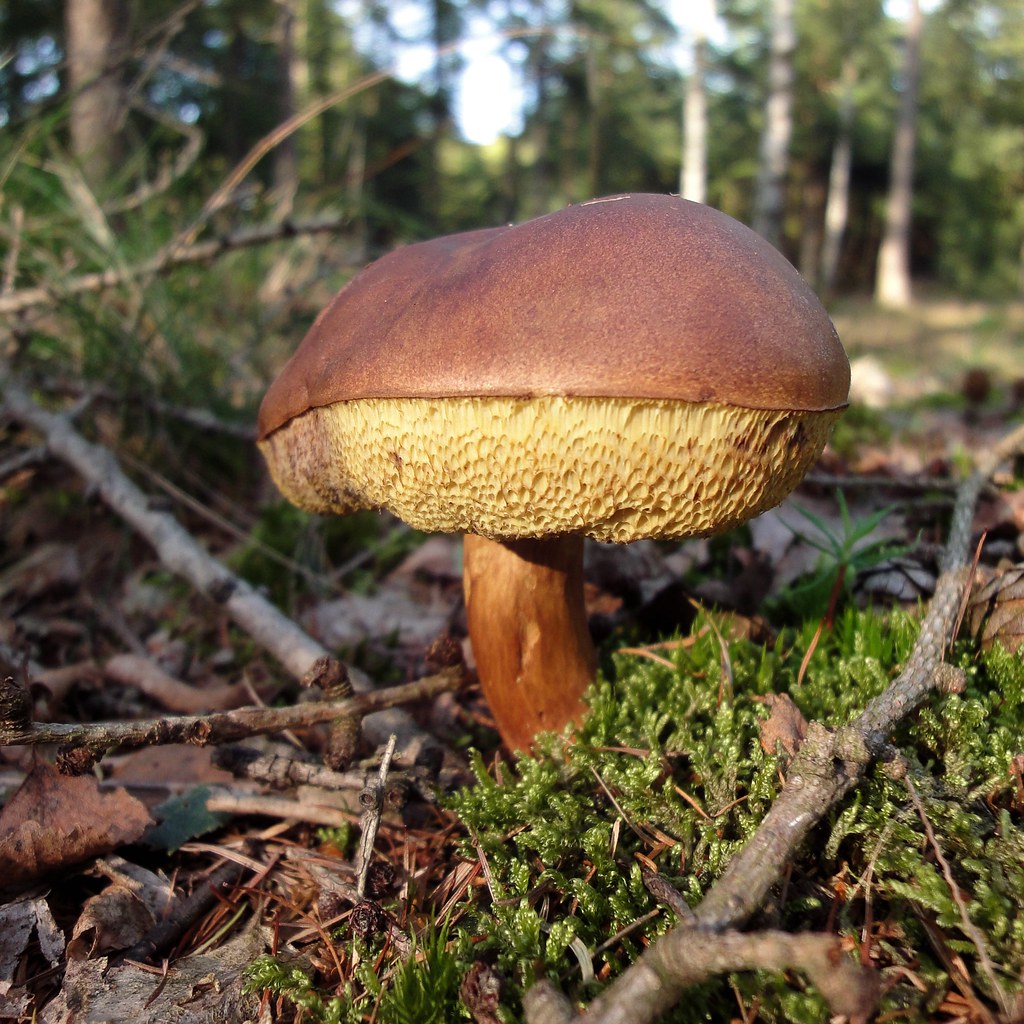
The Bay Bolete mushroom, a distant relative of the more well-known porcini, has a mild flavor.
It is commonly seen in Mexican markets near Izta-Popo Zoquiapan National Park, where it is widely collected.
Young mushrooms can be eaten fresh, while older ones are ideal for drying, and either form tastes fantastic when fried with vegan butter.
5. Black Trumpet Mushroom
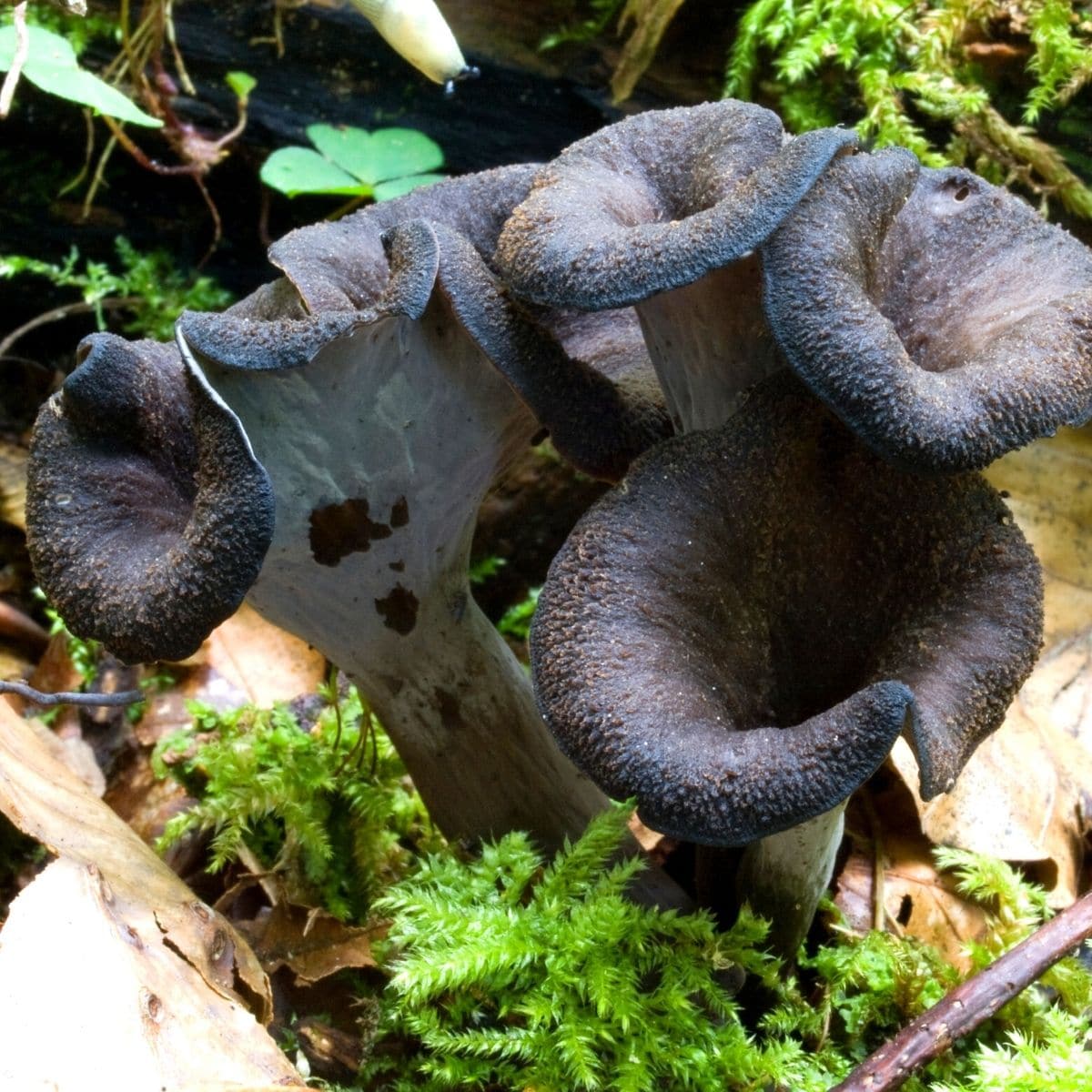
Despite its unappealing look, the funnel-shaped Black Trumpet mushroom is extremely popular.
It is high in protein and contains sugar alcohols, which give it a sweet taste, but it has fewer net carbs than many other sweet vegetables.
Dried black trumpets can be scattered atop foods as a condiment, while fresh versions are ideal for sweet and savory recipes.
6. Oyster Mushroom
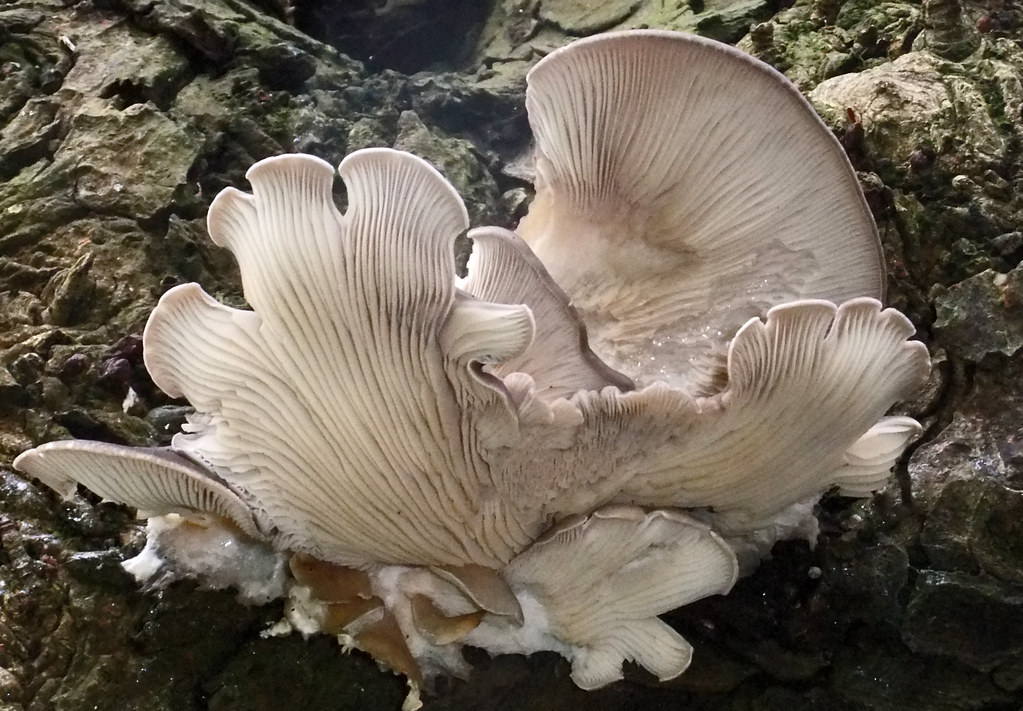
Oyster mushrooms are among the most significant, most frequent, and diverse edible mushrooms.
These fan-shaped mushrooms have a delicate flavor, aroma, and velvety texture.
They are incredibly tender and are commonly used in sauces, soups, and stir-fried recipes.
Oyster mushrooms, which have a whiteish tone, are named after oysters due to their striking resemblance.
This variety is now commercially farmed worldwide because of its ease of cultivation.
These mushrooms, grown in tropical climates, are used in various Chinese and Japanese recipes.
Oyster mushrooms have a distinct scent and flavor that improves when exposed to heat.
These edible mushrooms have several health benefits, are high in vitamins and minerals, and are often fat-free.
Oyster mushrooms are one of the different types of edible mushrooms.
They decrease cholesterol, improve immunological function and metabolic health, and promote heart health.
7. Cremini Mushroom

Cremini mushrooms are edible mushrooms that can be substituted for white button mushrooms.
Also known as “Baby Bellas,” they have a hard texture, a dark hue, and a wonderful flavor.
Cremini is commonly used in soups and stews because it holds up better when mixed with liquid.
These mushroom varieties are also used in pasta, omelets, tacos, tarts, casseroles, and risotto.
They can be cooked using sautéing, roasting, simmering, or baking.
Cremini mushrooms are low in calories and fat, making them essential to any diet.
Antioxidants, potassium, and fiber are particularly beneficial to heart health.
From inflammation reduction to high amounts of Vitamin B, this mushroom type provides a slew of surprise health benefits that should be at the top of people’s priority lists worldwide.
8. Caesar’s Mushroom
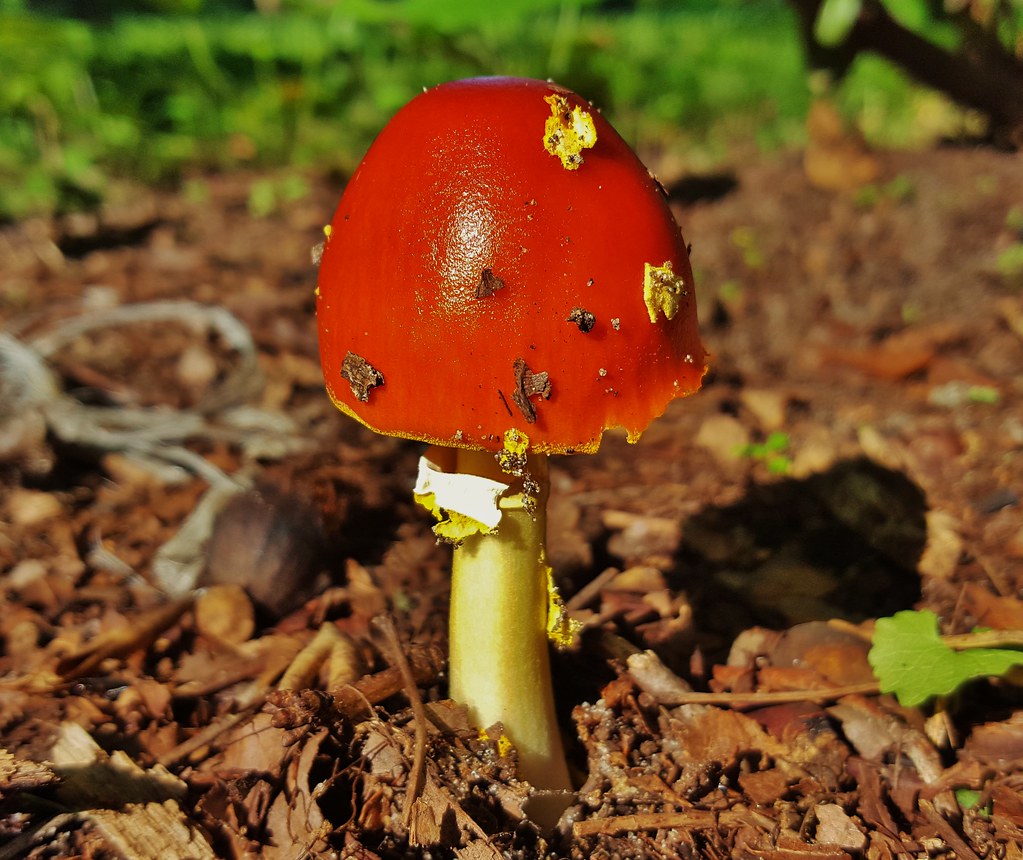
The Caesar’s mushroom has a long history, as its name implies. It is native to Southern Europe and Northern Africa and was popular among the Roman nobles.
It is most typically consumed in the juvenile button stage. It is commonly served raw in Italy with oil and salt, although it is also excellent when fried with spices.
9. Enoki Mushroom

Among edible mushrooms, the Enoki Mushroom is an uncommon variation with a shining white cap connected to its stem, giving it a unique yet appealing appearance.
It has a gentle and fruity flavor and is widely utilized in East Asian cuisine.
Enoki can be found in various dishes, including sandwiches, soups, salads, and pasta sauce.
Given their two distinct wild and farmed varieties, these mushrooms complement many cuisines worldwide.
The most excellent aspect of Enoki mushrooms is that they can be eaten raw or cooked according to one’s desire.
However, one must be careful not to overcook them, which causes the mushrooms to tighten and taste unpleasant.
Enoki mushrooms are rich in vitamins B1, B2, B3, and B5 and are endowed with beneficial capabilities.
They also contain iron, calcium, copper, selenium, and phosphorus, essential nutrients for the body.
They are high in dietary fiber and amino acids, which boost metabolism, reduce fat, and strengthen the immune system. They help the body fight allergies and improve digestion.
10. Shimeji Mushroom
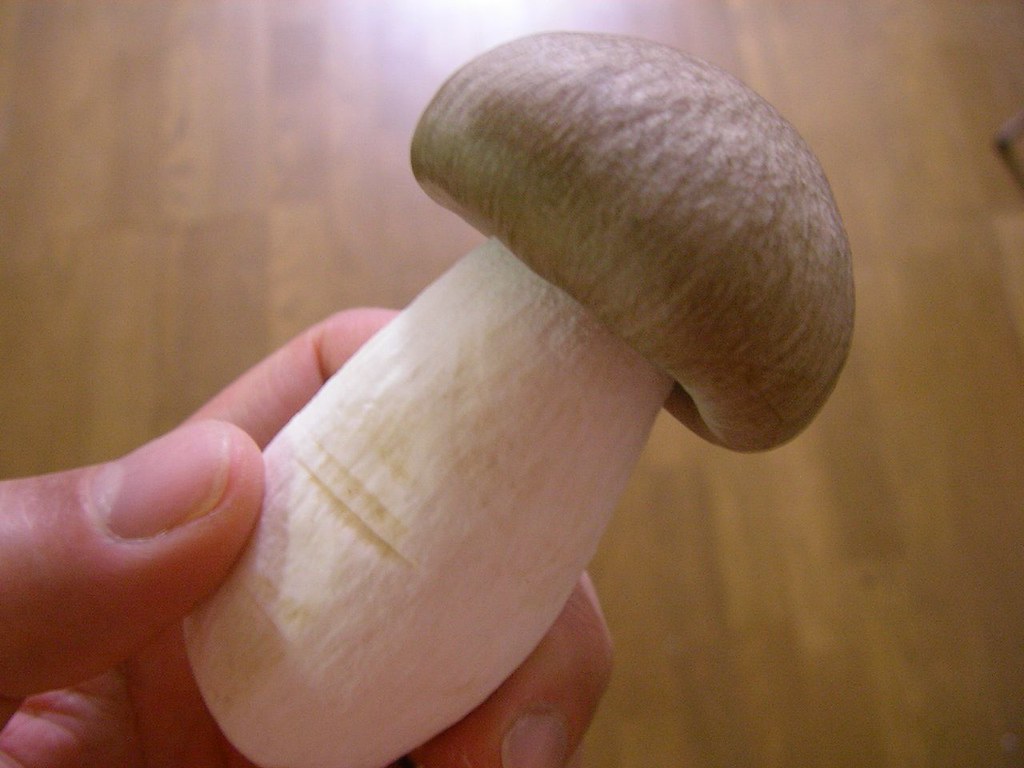
Shimeji Mushrooms are one of the different types of edible mushrooms.
They are native to Eastern Asia and grow in clusters with thick stems and caps.
This edible mushroom is distinguished by its speckled brown cap and white base.
Shimeji tastes bitter when eaten raw but becomes crisp, sweet, and nutty when cooked.
These mushrooms can be used in stews, soups, sauces, and stir-fried dishes.
Shimeji varieties are delicious when served with noodles. You can have it sautéed whole, including the beautiful stem! These varieties are endowed with umami-tasting chemicals (the essence of deliciousness) because they contain glutamic, aspartic, and guanylic acids.
Furthermore, Shimeji mushrooms are low in fat and high in dietary fiber. They also contain Vitamin B, copper, zinc, and protein.
They help with weight loss and diabetic management. These mushrooms also have antibacterial and anti-inflammatory characteristics that benefit the body.
11. Cauliflower Mushroom

The cauliflower mushroom may be one of the most gorgeous and ugly fungi.
It can grow fairly large and, with all those crevices, can be a pain to clean up, but the flavor is well worth it.
It goes well with red meat and is great in soups because it absorbs the taste of the broth and has the texture of thin egg noodles.
12. Chanterelle Mushroom
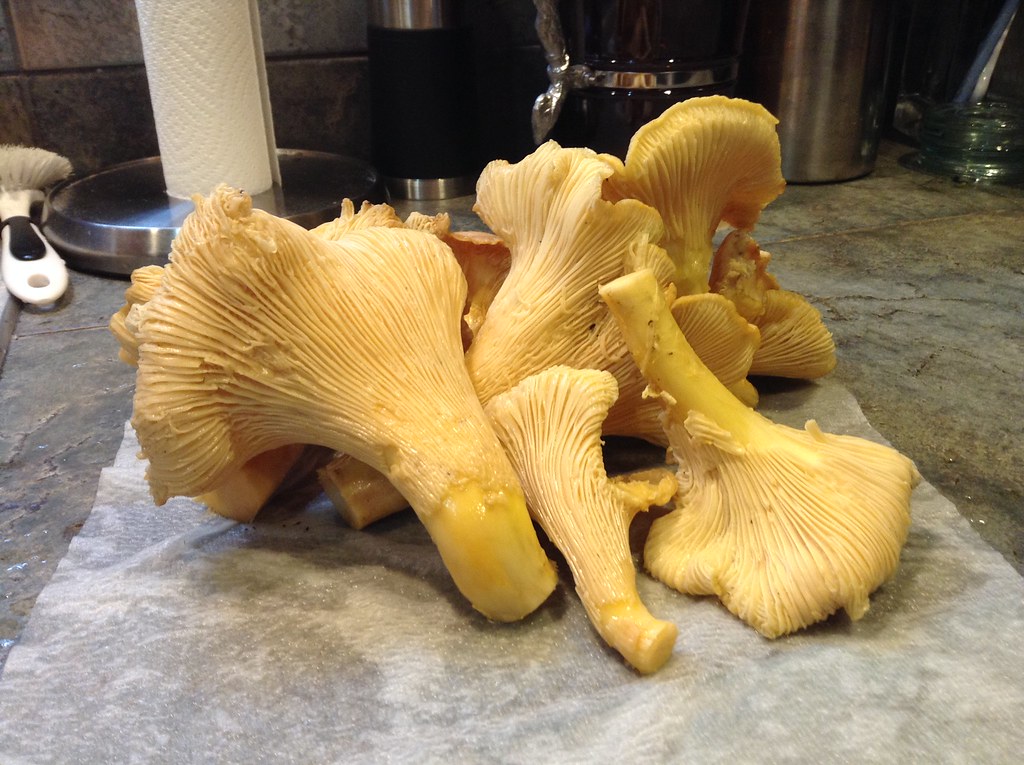
The well-known, brilliant yellow Chanterelle mushrooms are in high demand due to their distinct flavor, which combines peppery and fruity notes.
They are trendy in Europe and North America, and some chefs consider them a delicacy on par with truffles.
Cooking them in fat, such as butter, enhances their rich flavor, and they are an excellent addition to sauces, soups, and even souffles.
13. Paddy Straw Mushroom
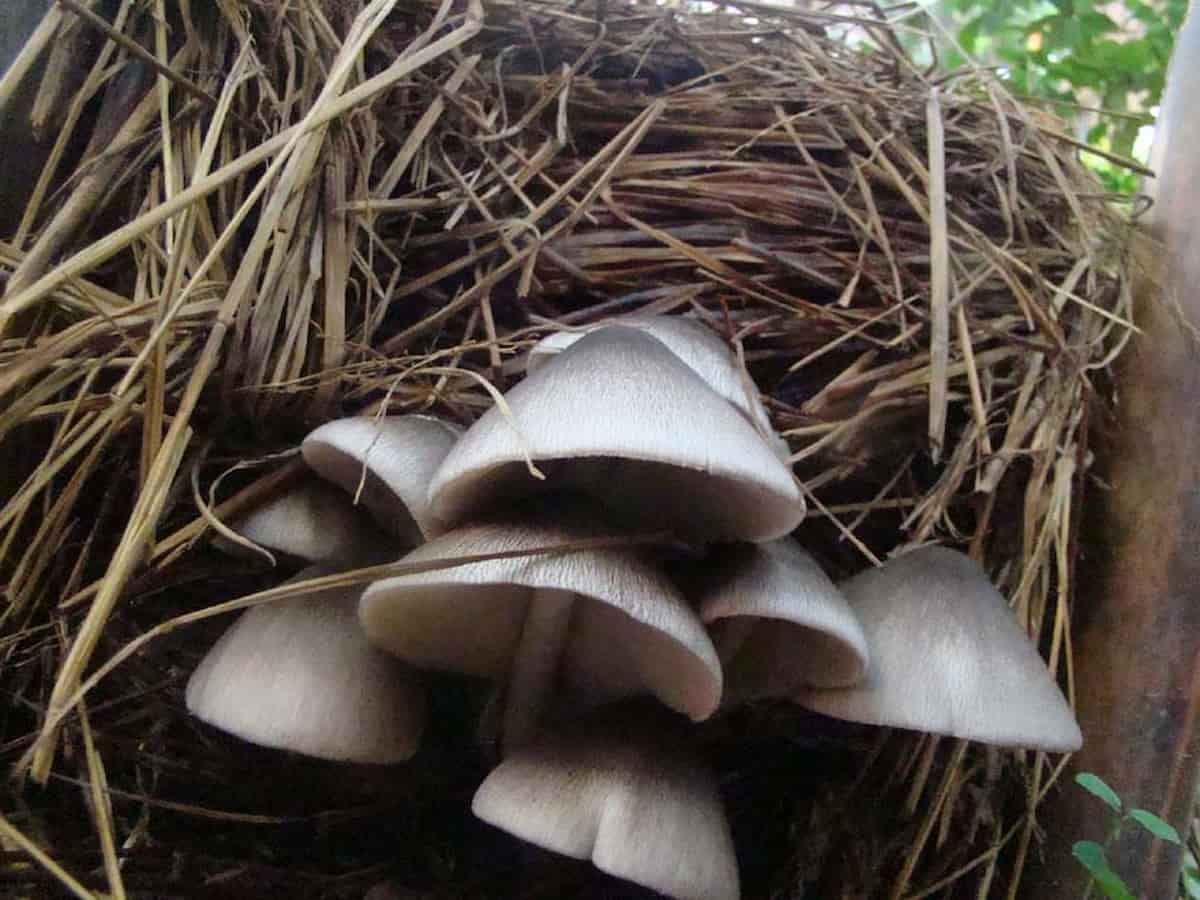
Paddy Straw is a common variety of button mushrooms. Fungi are among the most frequently edible fungi found on earth.
This item, which is farmed throughout East and Southeast Asia, has a rich flavor and perfume.
These are some of the easiest mushrooms to cultivate, and they are a prevalent variation that people worldwide enjoy.
These mushrooms are commonly used in Asian cuisines and can be bought dry or canned.
They are also readily available in the locations where they are grown.
Paddy straw mushrooms have several health advantages. Thanks to their high fiber, protein, iron, and vitamin B content, Paddy’s mushrooms are incredibly healthy. They help improve the immune system and decrease cholesterol.
Paddy’s also has vitamin D, which supports bones, and beta-glucan, which inhibits cancer cell development. These mushrooms can also help treat anemia.
14. Maitake Mushroom
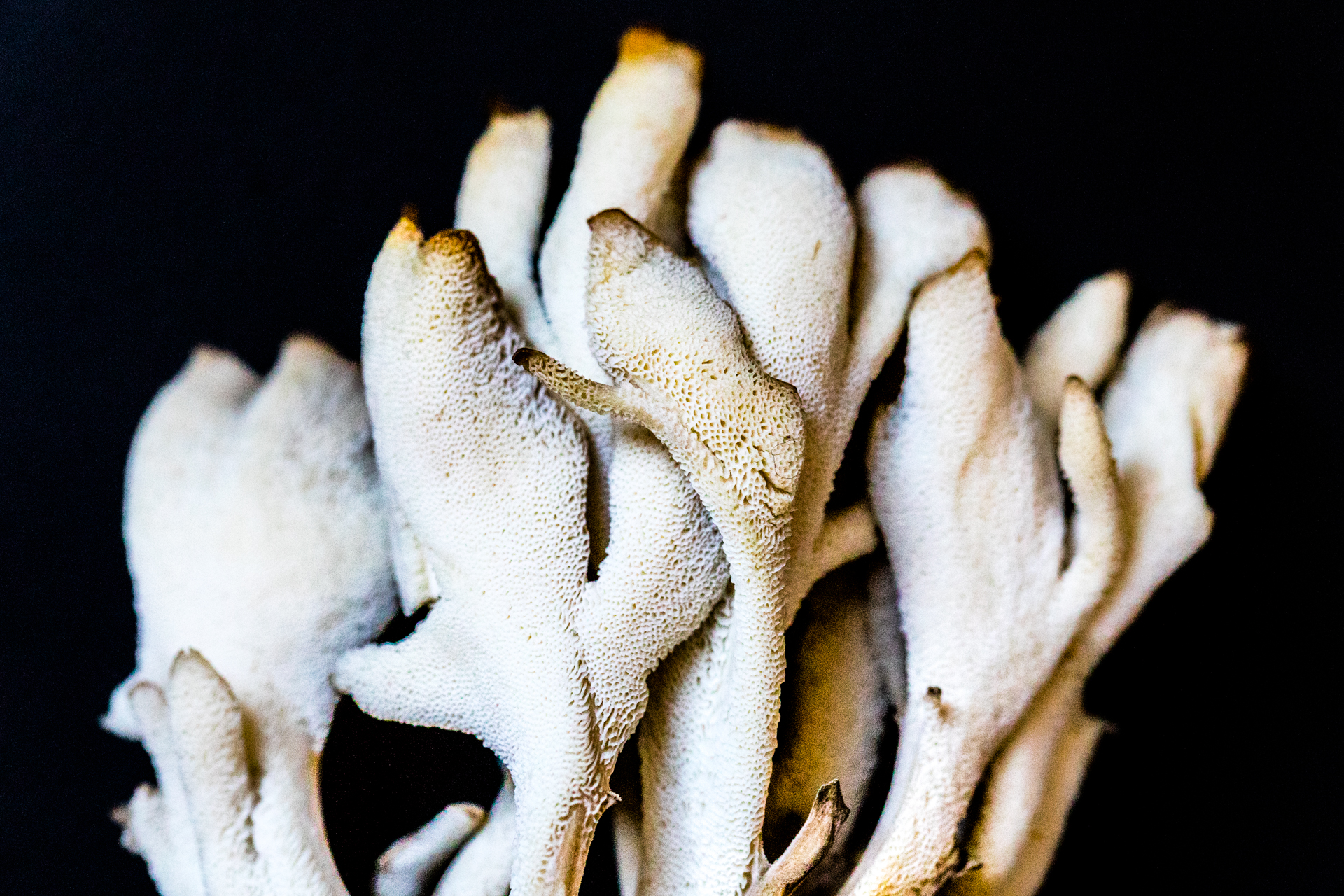
Maitake is easily distinguished from other edible mushrooms by its resemblance to a hen’s tail feathers.
Maitake, which means “dancing mushroom” in Japanese, grows wild in Japan, China, and North America.
These mushrooms possess an earthy scent and a delicate texture that is hard to resist.
Maitake is used in various meals, including burgers and stir-fried foods. It may be sautéed in oil or butter and cooked to your preference.
Blessed with a delicious taste, Maitake’s may be ideal for circumstances that call for mushrooms.
These mushrooms offer many health advantages. Maitake offers many benefits, including lowering blood sugar levels, eliminating malignant cells, and improving immunological function.
Maitake has much to offer. Not only that, but they also boost fertility and lower blood pressure and cholesterol levels.
15. Morel Mushroom
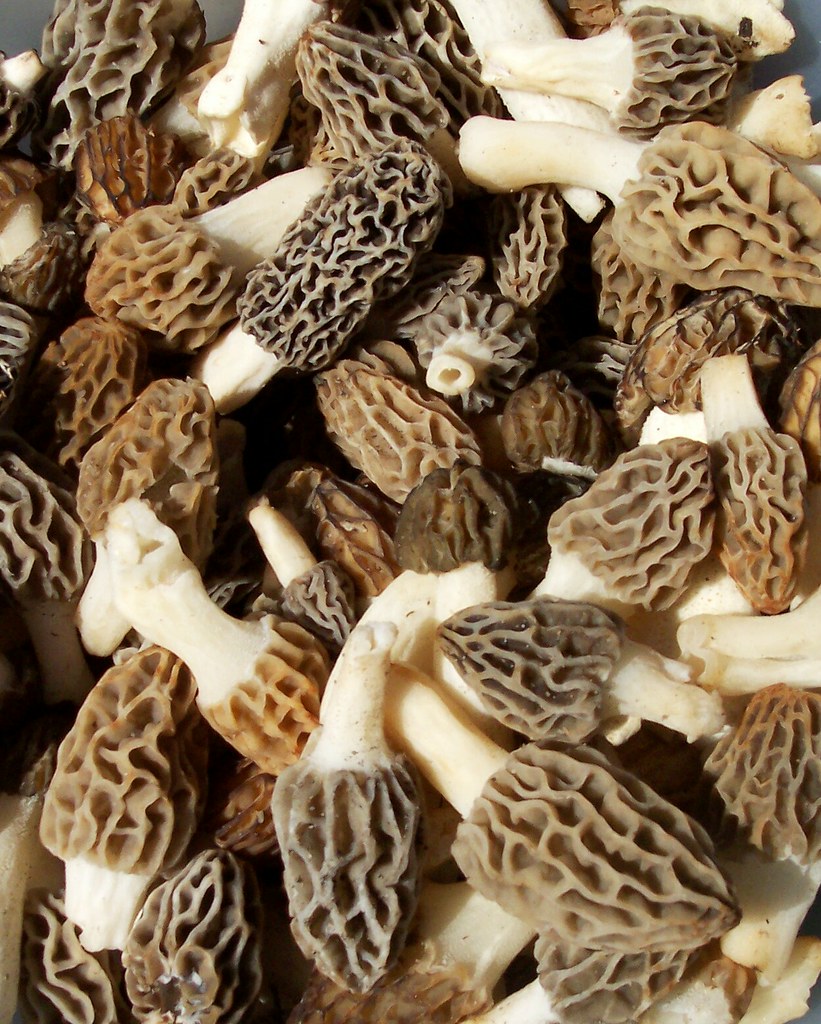
Morels are the most elusive edible mushroom species on Earth. These luxurious foods, offering rich flavor and texture, are commonly seen in plush restaurants and cuisines.
They are costly because of their difficulty in cultivation, limited growth season, and perishability.
Morels occur in a variety of sizes and forms. They might be rectangular or bulbous in shape and range in color from blond to gray.
Their appearance mimics that of a honeycomb, making them easily identified.
They are one of the edible mushrooms around Portland, Oregon, United States, with an extensive domestic and international fan base.
Aside from their characteristic flavor, these mushrooms have various health advantages.
They are rich in iron, phosphorus, zinc, vitamin D, folate, and riboflavin. Morels are also high in antioxidants, fiber, and protein but low in calories.
16. Lion’s Mane Mushroom
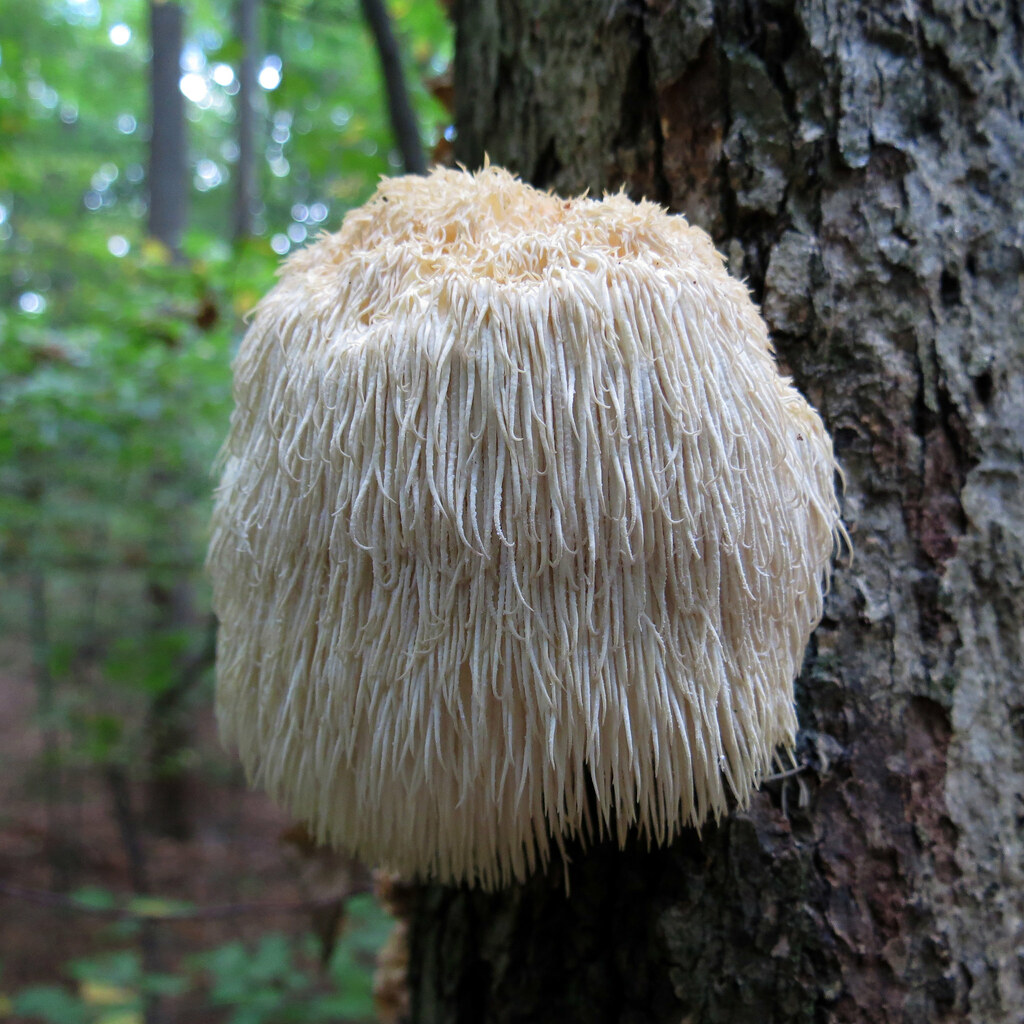
Lion’s Mane mushrooms are among the most delicious edible mushrooms.
They are white and hairy, with distinguishing traits that are difficult to ignore.
Depending on one’s needs, they can be ingested casually or as a supplement.
This unusual variation meets culinary demands with a somewhat sweet flavor and a delicate texture comparable to shellfish.
Lion’s Mane, often tasting like fish, can elevate any dish with its modest presence.
The mushrooms are used in soups, broths, and sauces with earthy overtones.
These mushrooms contain chemicals that promote brain cell development and protect against disorders such as Alzheimer’s.
They improve the immune system, reduce anxiety and depression, support heart health, and regulate blood sugar levels.
17. Giant Puffball Mushroom
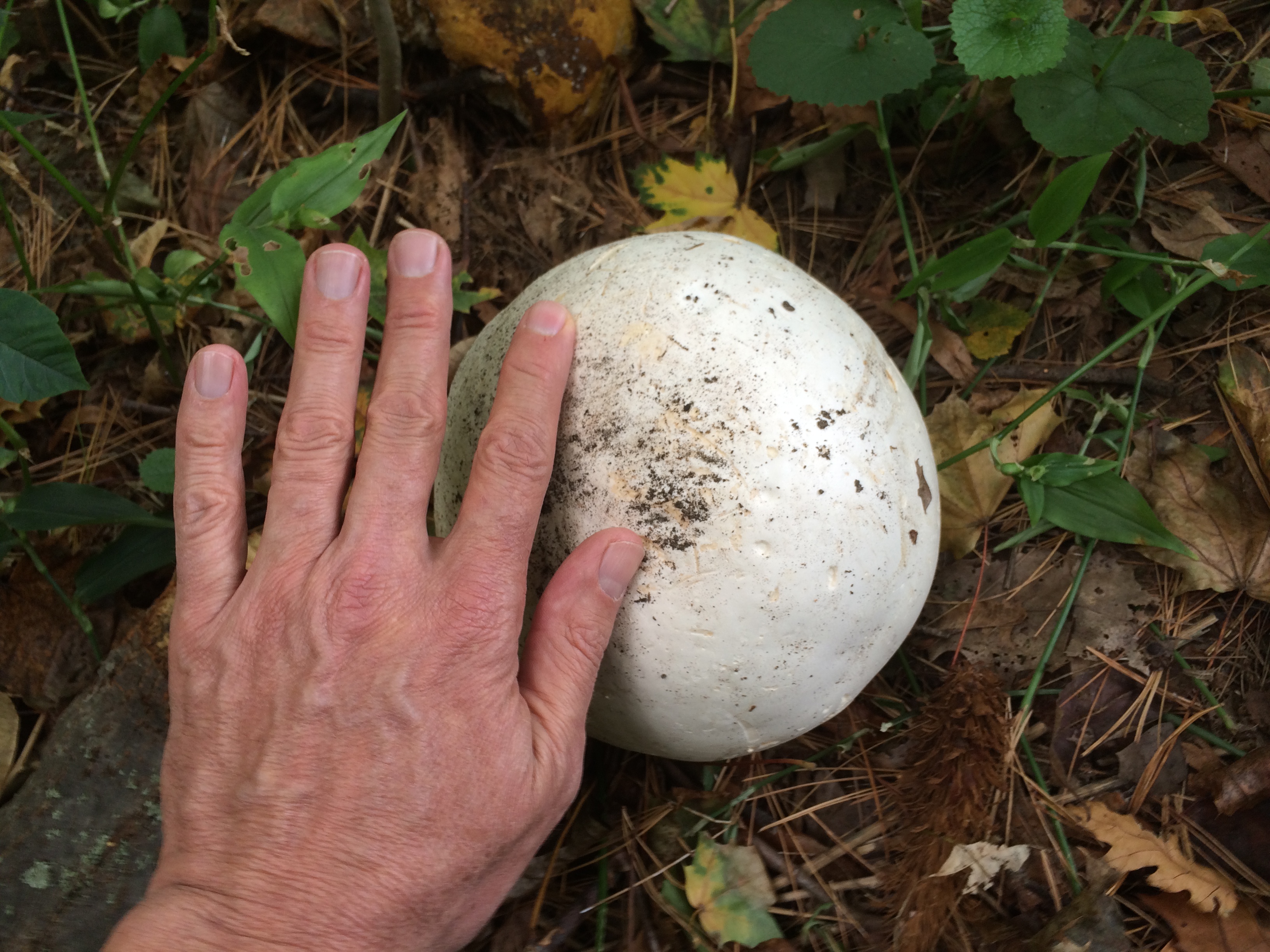
Giant Puffball mushrooms are awe-inspiring on their own. These mushrooms are mostly spherical but come in various forms and sizes.
They lack gills, caps, and stems, resembling a golf ball or a volleyball. They are most commonly seen in meadows, although they can also be found in lawns or grasses, which adds to their ball-like look.
Puffballs are frequently sautéed, dried, and even powdered for soups.
These mushrooms have a lengthy history and are considered a food source for indigenous people.
They are one of the edible mushroom kinds around Washington, DC, and are distinct.
Giant puffballs are known to have active chemicals and powerful antioxidants that the body needs.
They aid in the prevention of oxidative damage and a variety of other conditions.
These mushrooms also include antiviral and antibacterial characteristics that help defend against various ailments.
18. Black Trumpet Mushroom

Among the different types of edible mushrooms, Black Trumpet Mushrooms are one of the most loved variants in the world.
They grow in hardwood forests and can usually be found near trees with broad leaves, such as oak or beech. These mushrooms grow in North America, Europe, and Asia.
Due to their soft surface, black trumpets have a smooth touch and a suede-like feel.
Their influence on cuisines is undeniable, thanks to their deep, smokey, and fruity scent.
However, using only a few of these mushrooms in a meal is best since they might produce a harsh flavor if overdone.
High in Vitamin B12, these mushrooms, like their counterparts, are full of nutrients.
A vital source of vitamin C and antioxidants, they help keep the body healthy and fit, away from ailments.
These superfoods also aid in weight reduction and help decrease cholesterol.
19. Hedgehog Mushroom
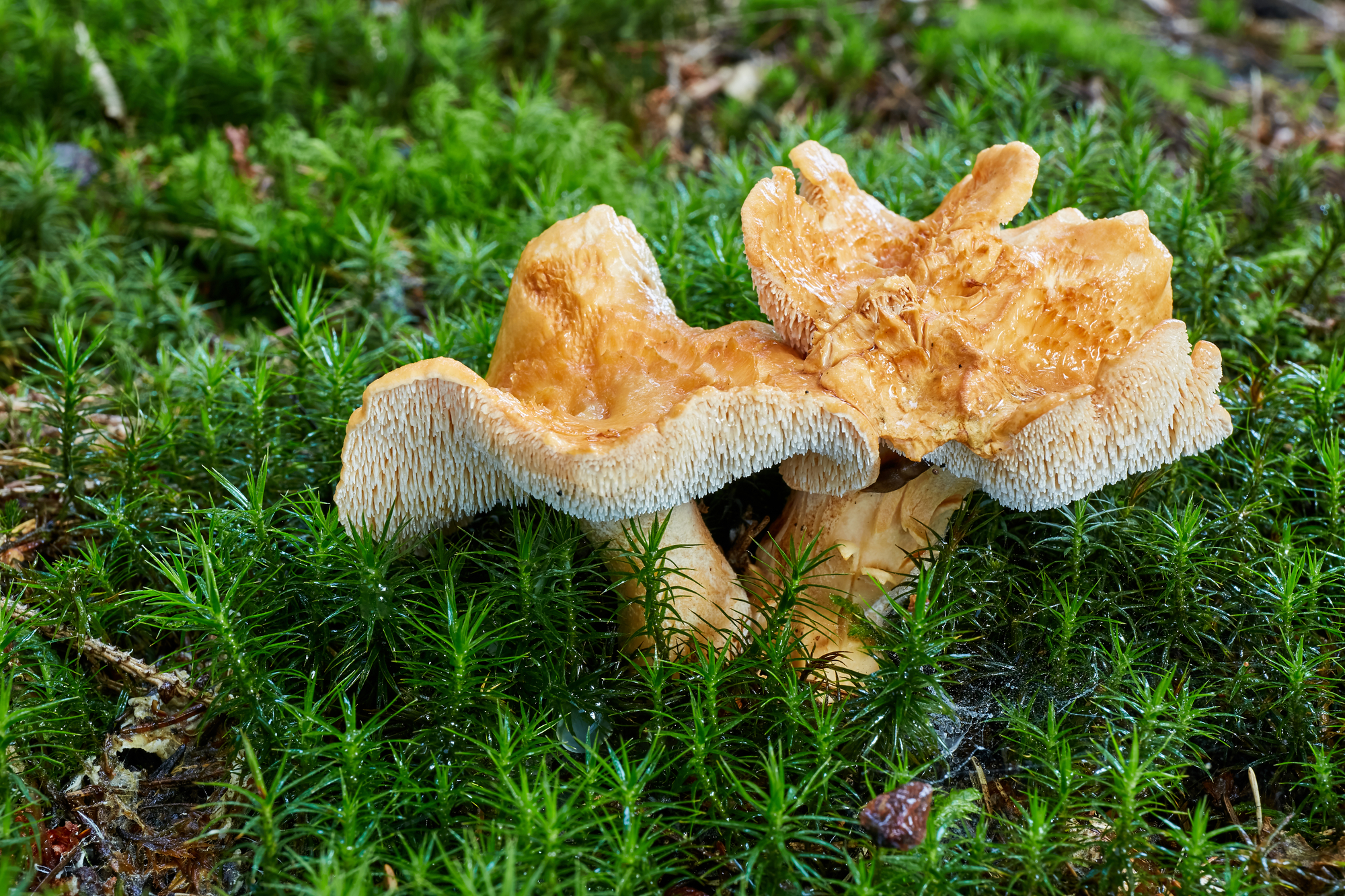
Hedgehog mushrooms are delightfully surprising edible mushroom varieties.
Their yellow-to-orange crowns evoke summer emotions, which adds to their attractiveness.
With fork-ridges on their underside, these mushrooms have an appealing look that immediately draws attention.
These mushrooms have an earthy, nutty, and sweet flavor with a slight peppery aftertaste, making them one of the most beautiful edible fungi on the planet.
They have a crispy exterior and solid meat. Hedgehog mushrooms are low in fat and high in protein.
They have antibacterial characteristics, which are vital for a healthy body.
They are rich in copper, protein, vitamin B, zinc, and selenium. They also promote bone strength and blood clotting, among other things.
20. Chicken of the Woods Mushroom
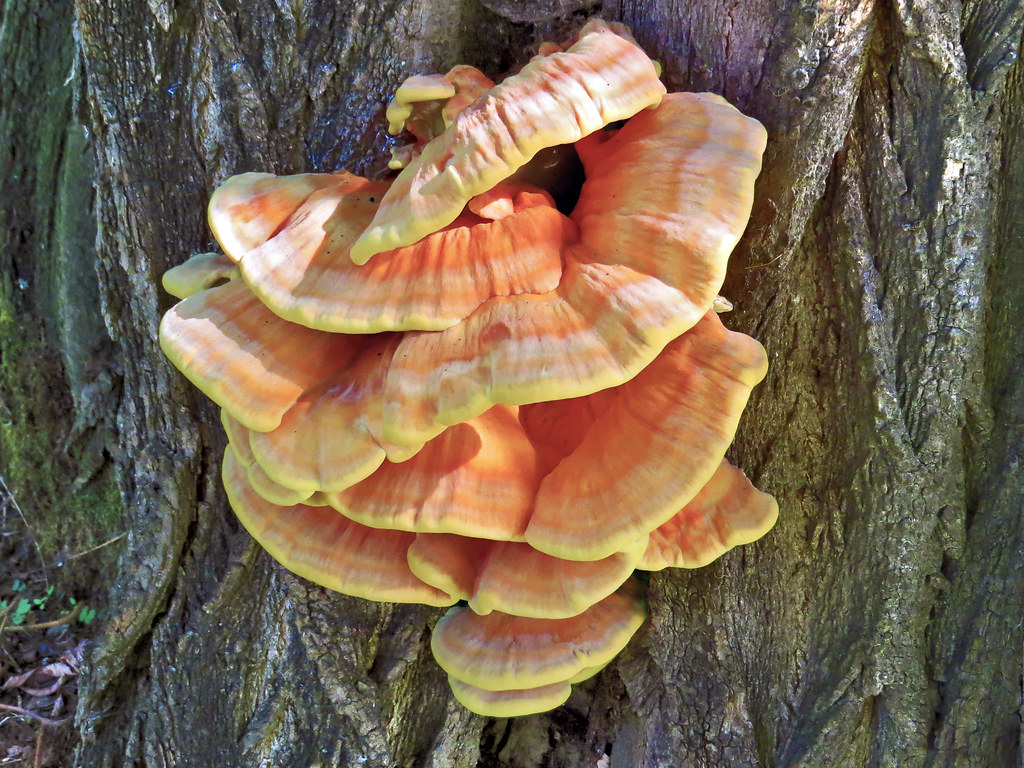
The humorous Chicken of the Woods mushroom, which resembles a prop from a fantasy story or a horror film, may be found worldwide.
Its harder consistency and weird, chicken-like taste make it an ideal vegetarian substitute for chicken in many recipes.
If you are unfamiliar with this fungus, proceed cautiously because allergic responses are prevalent.
It is better to begin with a modest amount of young flesh and observe how your body reacts.
21. Common Ink Cap Mushroom
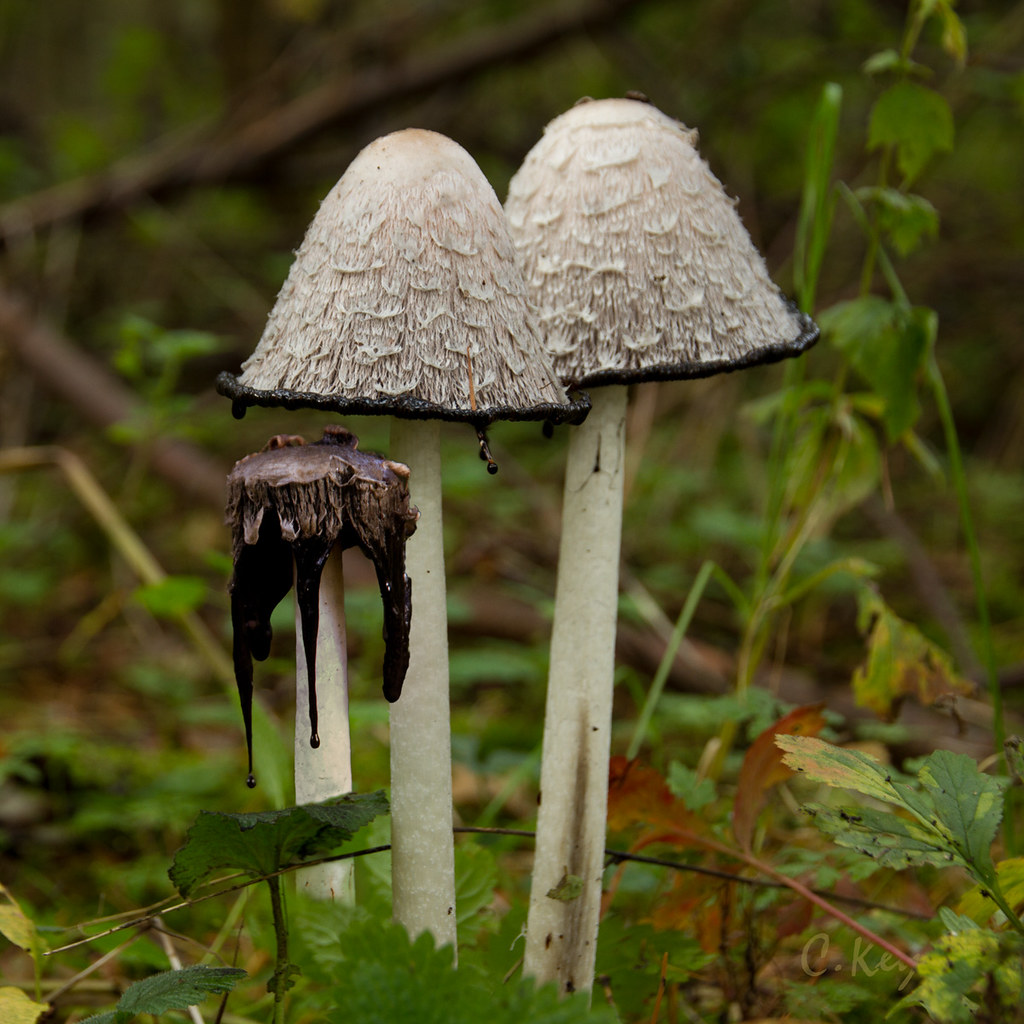
The purplish-blue Common Ink Cap mushrooms are edible in their young state before the gills become black.
However, even when selected at the appropriate time, they can offer significant risks, particularly to individuals who consume alcohol.
They inhibit the breakdown of alcohol in the liver, resulting in disulfiram syndrome, which produces flushing, nausea, and tingling.
Nonetheless, they are treasured for their usage in mushroom soup and other cuisines, requiring only a little moisture.
Just make sure you don’t drink any alcohol while eating these meals.
22. Crab Brittlegill Mushroom
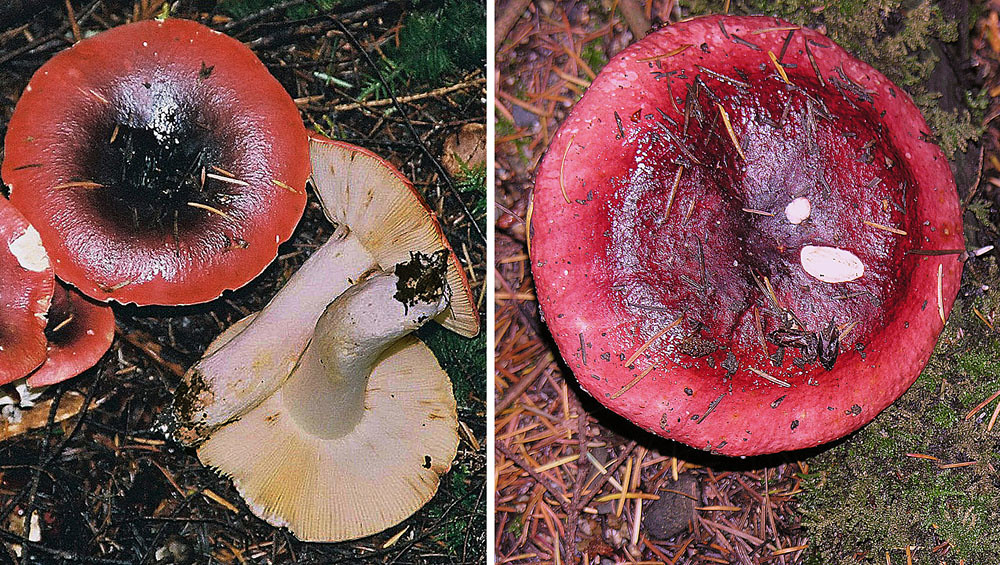
This russula mushroom is named for its cooked-crab-like stench when fresh and its brittle, bitter-tasting gills.
They are widespread in North American and European coniferous forests. Crab brittlegills are among the most common edible mushrooms of their kind.
The seafood odor persists after cooking, which might benefit the correct meal.
More young specimens have a softer odor and taste that lends themselves well to various recipes.
23. Dryad’s Saddle

Dryad’s Saddle mushroom, which lives in the trunk, is often found worldwide, from America and Europe to Australia.
When immature, it smells cucumbery and tastes lemony. They are excellent when cooked in butter and pair nicely with fish and white meats.
Mature specimens are not harmful but are rough and frequently include maggots.
If that final portion doesn’t scare you, collect and boil these oversized caps to produce an excellent broth or soup stock.
24. Field Mushroom
The wild field mushroom, a close cousin of the famous button mushroom, is widely found in meadows throughout Europe and America.
Like its more famous relative, it may be sautéed, prepared in sauces, or eaten raw in salads.
While plentiful under the correct conditions, the brief life cycle of this fungus makes it difficult to harvest in large amounts.
25. Green Cracking Russula
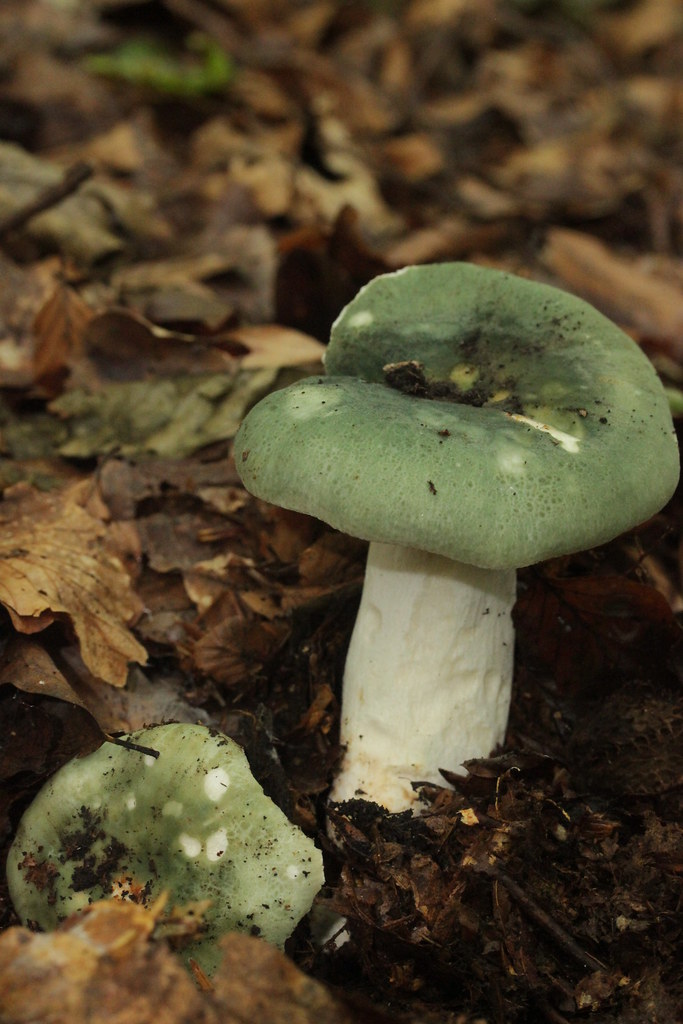
The huge Green Cracking Russula is popular in both Spain and China. It features a distinctive green-speckled top and a large diameter.
The flavor might be light, nutty, or even fruity. The massive size of these caps makes them ideal for grilling, and they were initially cooked by toasting them over an open flame with a sprinkle of salt.
26. Honey Fungus Mushroom
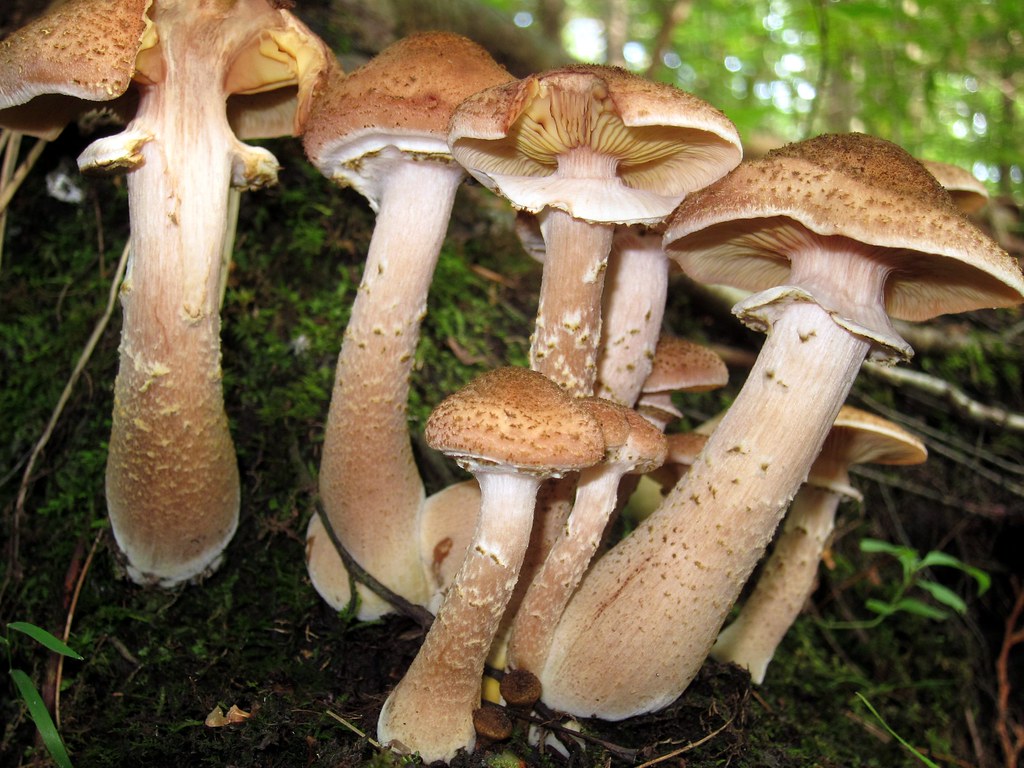
The compact, clustered caps of the Honey Fungus mushroom, widely recognized as one of the tastiest wild mushrooms in the world, are a must-have for any fungus hunter.
They are slightly dangerous in their raw form, and when coupled with alcohol, they can create issues.
However, when properly cooked, these mushrooms’ nutty, rich flavor makes the risk worthwhile.
27. Parasol Mushroom
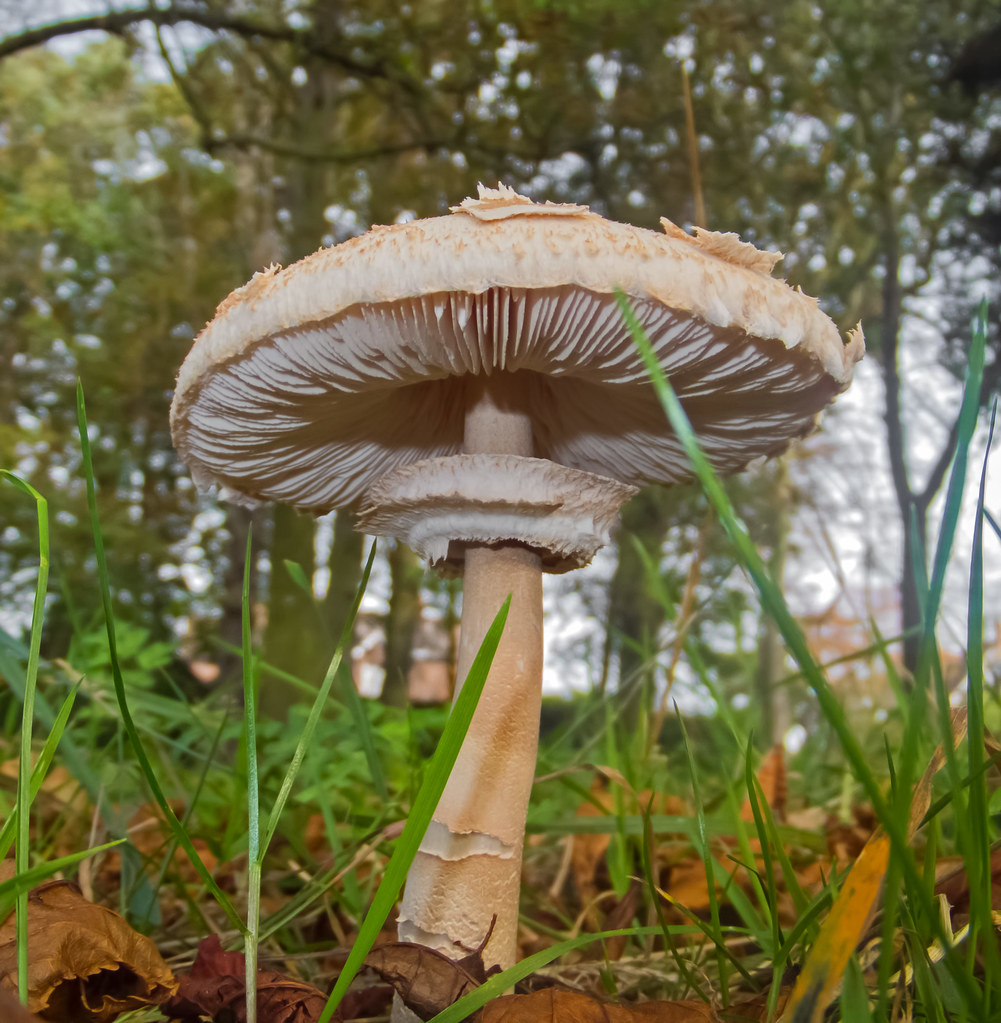
As the name implies, the vast Parasol mushroom resembles a wide parasol when fully ripe.
The narrow, tall stem and flat, scaled crown make them simple to recognize.
They are best plucked when the cap is still circular like a “drumstick” or before it has flattened completely.
They are famous for their size and availability more than their particular flavor, but they make an excellent dinner, especially when coated in bread crumbs and fried.
28. Red Pine Mushroom
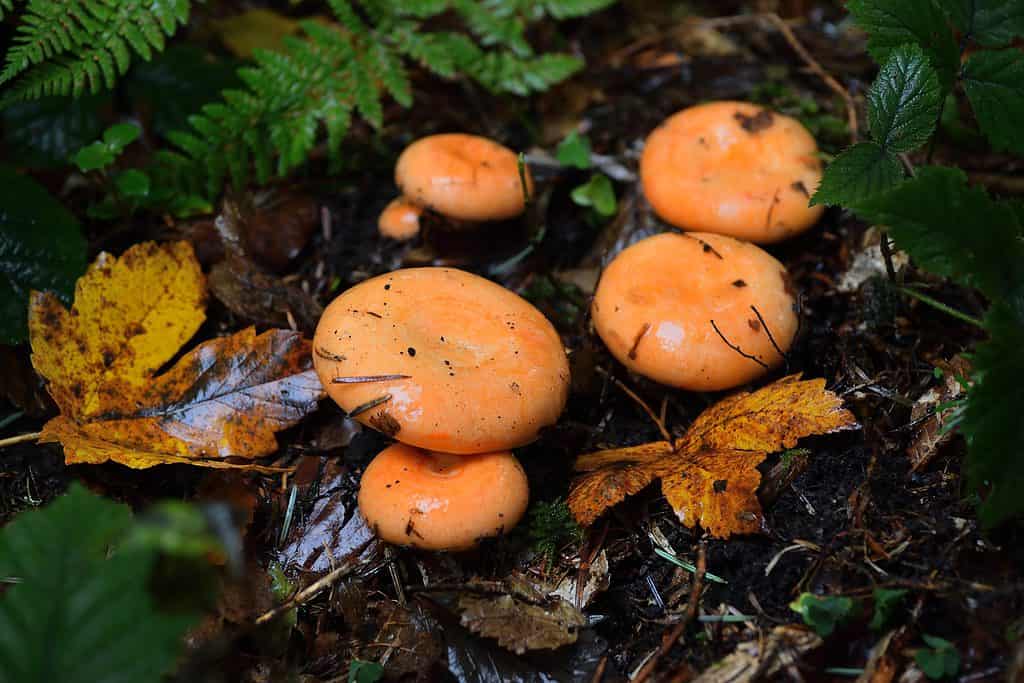
The Red Pine mushroom is a milk cap species endemic to Europe, although it has spread far, typically by hitching onto transplanted conifers.
The distinctive orange coloration and slightly inverted crown make it simple to recognize from other fungus.
It is the most treasured wild mushroom in Spain, where it is only cooked in olive oil, although it may also be found in classic recipe books from the Eastern Bloc and India.
29. Reishi Mushroom
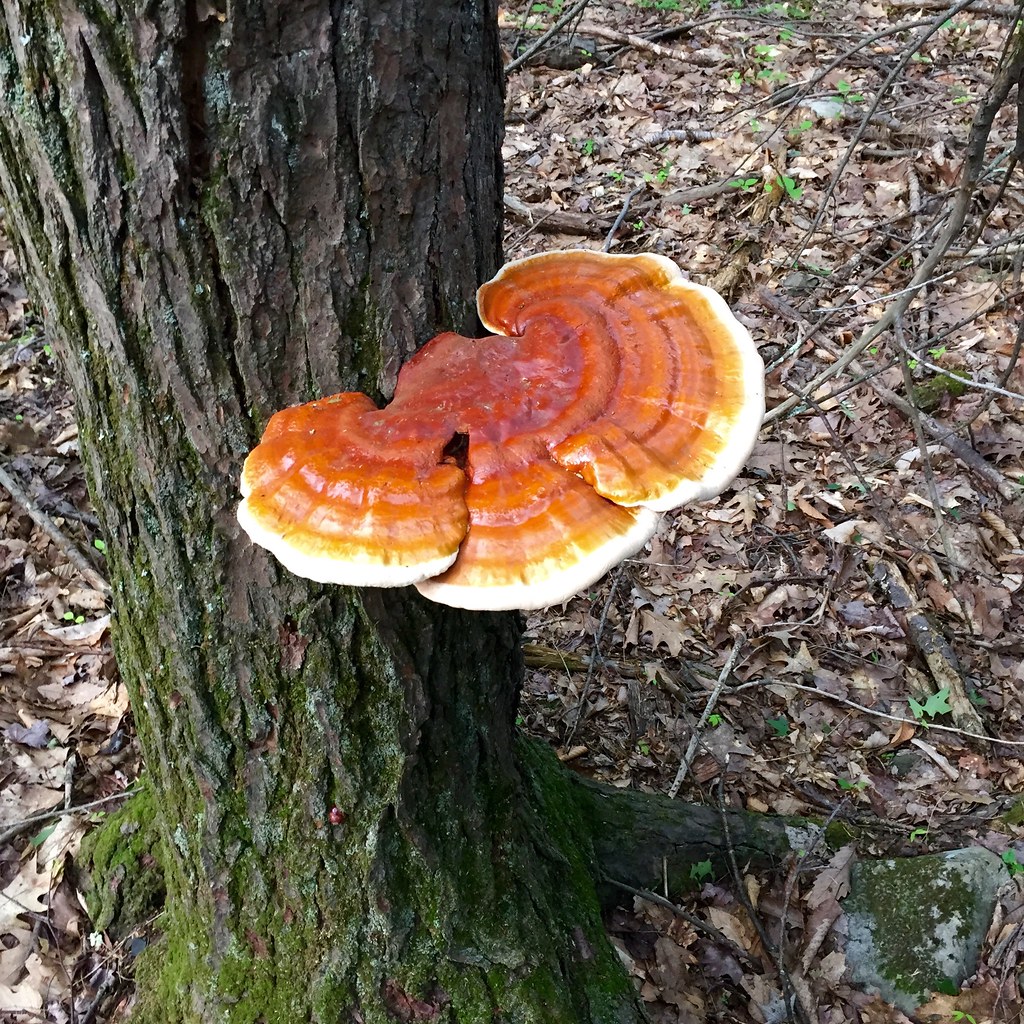
While edible, this deep-red, fan-like Reishi fungus is most frequently ingested as a powder supplement and is not utilized in cooking.
It has long been used in Chinese medicine, where it is thought to improve memory, expand energy pathways, and even allow for eternal life.
While contemporary research has yet to prove these precise claims, there is evidence that reishi can help cancer patients during treatment and that supplementing can provide the body with vital phytochemicals that promote general health.
30. Wood Blewit Mushroom
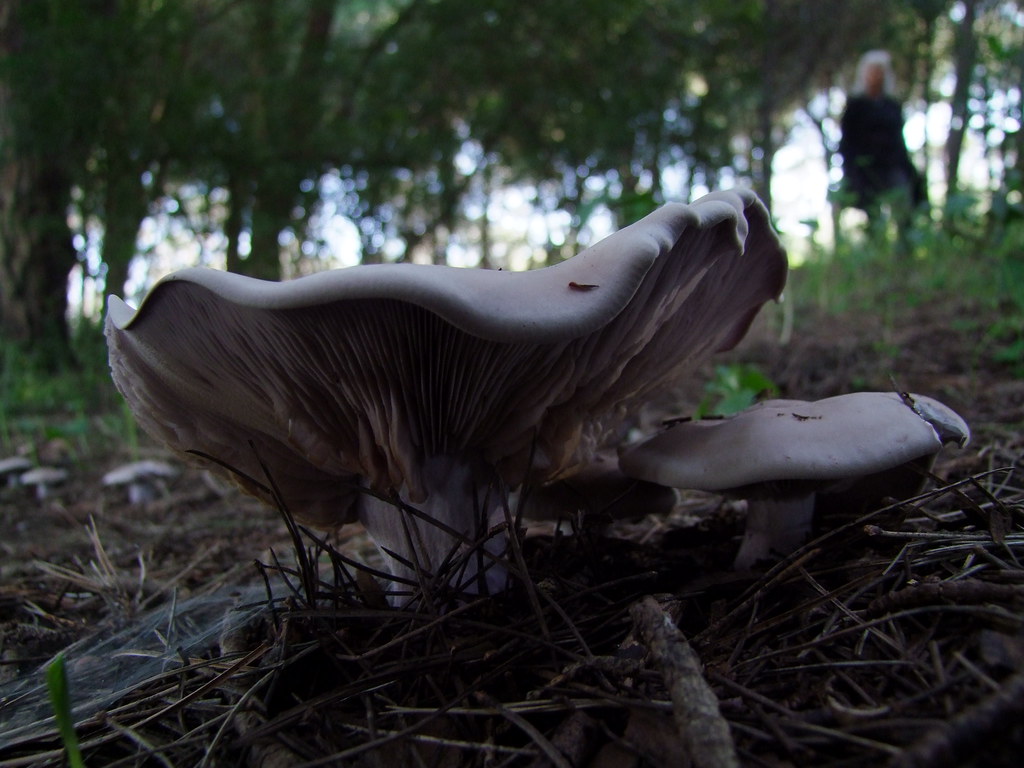
The Wood Blewit mushroom is a huge, wide-capped type that is endemic to Europe and North America.
Despite being grown in numerous European nations, their edibility remains debatable.
It is fairly unusual for people to experience an adverse reaction to these mushrooms when consumed uncooked.
However, even when cooked, some persons with high sensitivity may react.







